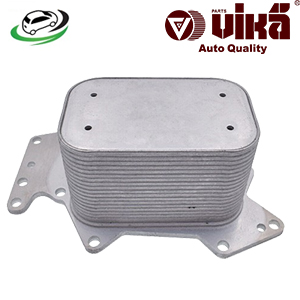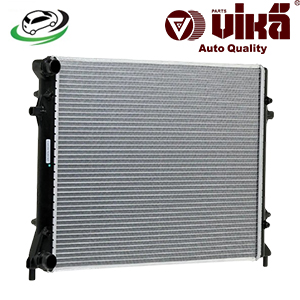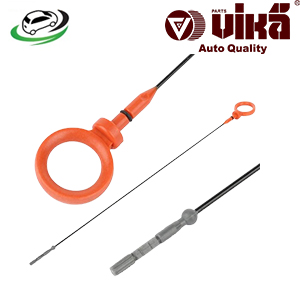-20%
The engine oil cooler is a crucial component in modern vehicles, particularly those with high-performance engines or vehicles that operate under heavy loads. Its primary function is to regulate the temperature of the engine oil, ensuring that it remains within the optimal temperature range. This is essential for maintaining engine efficiency, preventing overheating, and prolonging the life of the engine. In this comprehensive guide, we’ll explore the function, types, construction, importance, common issues, and maintenance of the engine oil cooler.
Function of the Engine Oil Cooler
The engine oil cooler serves several important functions in the overall operation of an engine:
- Temperature Regulation: Engine oil is responsible for lubricating moving parts within the engine, reducing friction, and dissipating heat. However, during high-performance driving or under heavy loads, the oil can become excessively hot. The oil cooler works by transferring this excess heat from the oil to the coolant or air, depending on the type of cooler. This helps keep the oil at an optimal temperature, preventing it from breaking down and ensuring that it continues to provide adequate lubrication.
- Maintaining Oil Viscosity: The viscosity of engine oil is crucial for its effectiveness. If the oil gets too hot, it can become too thin, losing its ability to form a protective film over engine parts. Conversely, if it’s too cold, it can become too thick, making it difficult for the oil to circulate and properly lubricate the engine. The oil cooler helps maintain the right balance, ensuring that the oil remains at the proper viscosity for effective engine protection.
- Protecting Engine Components: Overheated oil can lead to the breakdown of the oil’s chemical structure, causing it to lose its lubricating properties. This can result in increased friction between engine components, leading to premature wear and, in extreme cases, engine failure. The oil cooler helps prevent such scenarios by keeping the oil within a safe temperature range.
- Enhancing Engine Performance: In high-performance or turbocharged engines, the oil cooler is essential for maintaining consistent performance. By preventing the oil from overheating, the cooler ensures that the engine can operate at higher speeds and under greater loads without risk of damage.
Types of Engine Oil Coolers
Engine oil coolers come in different types, each designed to suit specific engine needs and operating conditions:
- Air-Cooled Oil Coolers:
- Design: These coolers use the flow of air to dissipate heat from the engine oil. The cooler consists of a series of fins and tubes through which the hot oil flows. As air passes over the fins, it cools the oil before it returns to the engine.
- Applications: Air-cooled oil coolers are commonly used in vehicles with ample airflow, such as motorcycles, performance cars, and some off-road vehicles. They are particularly effective in environments where the vehicle is moving at high speeds, allowing air to flow freely over the cooler.
- Liquid-Cooled Oil Coolers:
- Design: Liquid-cooled oil coolers use the engine’s coolant to cool the oil. These coolers are typically integrated into the engine’s cooling system. The oil passes through a heat exchanger where it is cooled by the coolant before being circulated back into the engine.
- Applications: Liquid-cooled oil coolers are commonly found in modern cars and trucks, especially those with turbocharged or high-performance engines. They are highly effective because they can cool the oil regardless of vehicle speed, making them suitable for a wide range of driving conditions.
- Plate and Fin Oil Coolers:
- Design: These coolers consist of multiple thin plates stacked together, with oil flowing between them. The plates increase the surface area for heat exchange, making these coolers very efficient at transferring heat from the oil to the air or coolant.
- Applications: Plate and fin coolers are often used in racing vehicles and high-performance engines due to their compact design and high efficiency.
- Remote-Mount Oil Coolers:
- Design: These coolers are mounted separately from the engine, often in a location with better airflow. A thermostat may control them to regulate oil flow based on temperature.
- Applications: Remote-mount oil coolers are used in applications where space near the engine is limited or where additional cooling capacity is needed. They are common in race cars, trucks, and custom vehicles.
Construction of the Engine Oil Cooler
The construction of an engine oil cooler is designed to maximize its heat dissipation capabilities while maintaining durability and efficiency. The key components include:
- Core:
- Material: The core of the oil cooler is typically made from aluminum due to its excellent thermal conductivity and lightweight properties.
- Design: The core consists of a series of tubes or plates through which the oil flows. The design of these tubes or plates is optimized to increase the surface area for heat exchange, enhancing the cooler’s efficiency.
- Fins:
- Function: The fins are attached to the core and increase the surface area exposed to air or coolant, which aids in heat dissipation. The fins are typically made of aluminum and are designed to maximize airflow or coolant flow across the cooler.
- End Tanks:
- Design: End tanks are located at either end of the core and direct the flow of oil through the cooler. They are usually made from aluminum or composite materials and are designed to withstand high pressures and temperatures.
- Inlet and Outlet Ports:
- Function: These ports allow the oil to enter and exit the cooler. They are designed to match the specific oil lines or hoses used in the vehicle’s oil system, ensuring a secure and leak-free connection.
- Mounting Brackets:
- Function: The mounting brackets secure the oil cooler to the vehicle. They are typically made from metal and are designed to withstand the vibrations and forces experienced during vehicle operation.
Importance of the Engine Oil Cooler
- Preventing Overheating: The engine oil cooler is essential in preventing the engine oil from overheating, especially in high-performance vehicles or under heavy loads. Overheated oil can lead to engine damage, reduced performance, and increased wear on engine components.
- Extending Engine Life: By maintaining the oil at an optimal temperature, the oil cooler helps extend the life of the engine. It reduces the risk of oil breakdown and the formation of harmful deposits, which can lead to engine wear and failure.
- Enhancing Performance: In vehicles designed for high-speed or heavy-duty use, the oil cooler plays a crucial role in maintaining consistent engine performance. It ensures that the engine can operate at peak efficiency, even under demanding conditions.
- Improving Fuel Efficiency: By keeping the engine oil within the optimal temperature range, the oil cooler helps improve fuel efficiency. The engine operates more smoothly and efficiently when the oil is at the right viscosity, reducing fuel consumption.
Common Issues with Engine Oil Coolers
- Leaks: One of the most common issues with oil coolers is leaks. Leaks can occur due to damage to the cooler itself, issues with the hoses or connections, or wear and tear over time. A leaking oil cooler can lead to low oil levels and reduced cooling efficiency, which can cause engine overheating and damage.
- Blockages: Debris, sludge, or other contaminants can accumulate in the oil cooler, leading to blockages. Blockages can restrict oil flow, reducing the cooler’s effectiveness and potentially leading to engine overheating.
- Corrosion: Over time, the metal components of the oil cooler, particularly those made of aluminum, can corrode. Corrosion can weaken the cooler and lead to leaks or reduced heat dissipation.
- Thermostat Failure: In systems where the oil cooler is controlled by a thermostat, failure of the thermostat can prevent the cooler from operating correctly. This can lead to either overcooling or overheating of the engine oil.
Maintenance and Care
- Regular Inspections: Regularly inspect the oil cooler and associated components for signs of leaks, damage, or corrosion. Check the hoses and connections for any signs of wear or leaks. Early detection of issues can prevent more severe engine problems.
- Cleaning: Keep the oil cooler clean and free of debris. For air-cooled oil coolers, ensure that the fins are clean and free from obstructions that could restrict airflow. For liquid-cooled systems, ensure that the coolant is clean and that the system is free of blockages.
- Coolant Maintenance: For liquid-cooled oil coolers, maintaining the engine’s coolant system is crucial. Regularly check the coolant level, and flush and replace the coolant as recommended by the manufacturer to prevent blockages and corrosion.
- Monitor Oil Levels: Always ensure that the engine oil is at the correct level. Low oil levels can reduce the effectiveness of the oil cooler and increase the risk of engine damage.
- Thermostat Check: If your vehicle’s oil cooler is controlled by a thermostat, ensure that it is functioning correctly. A faulty thermostat can lead to improper oil cooling and potential engine damage.





